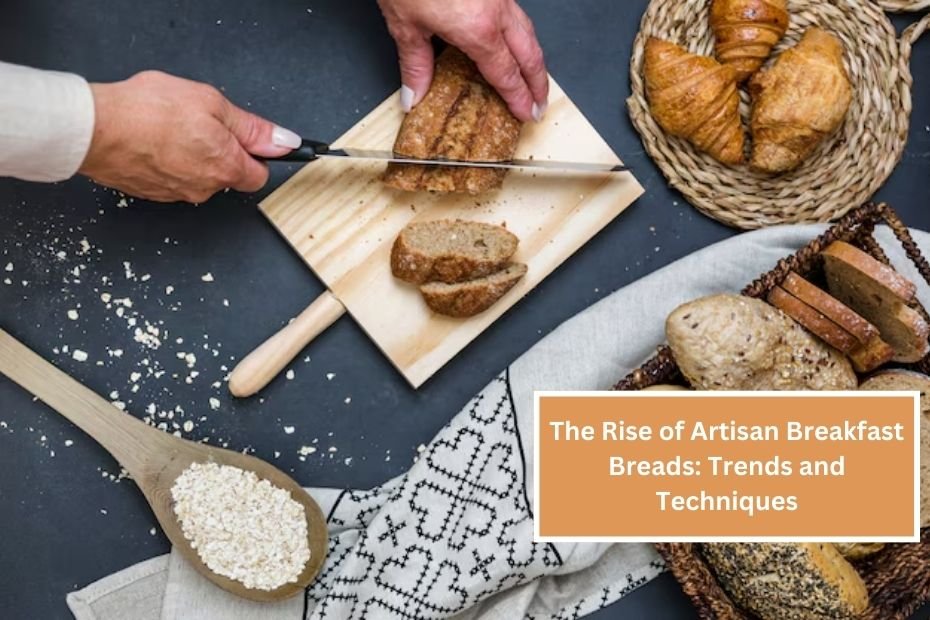Breakfast is often called the most important meal of the day, and for many, a delicious bread can make it even more special. Over the past few years, artisan breakfast breads have become increasingly popular. These breads are not just about filling your stomach; they are about flavor, texture, and the experience of enjoying something homemade. In this article, we’ll explore the trends and techniques behind artisan breakfast breads, why they matter, and how you can incorporate them into your morning routine.
What Are Artisan Breads?
Artisan breads are typically made using traditional methods and high-quality ingredients. Unlike mass-produced breads that may contain preservatives and artificial flavors, artisan breads focus on natural ingredients and time-honored techniques. This makes each loaf unique in taste and texture.
Characteristics of Artisan Breads
- Handcrafted: Artisan breads are usually made by hand, often with little to no machinery involved. This attention to detail ensures a high level of quality and craftsmanship.
- Natural Ingredients: Most artisan breads use simple ingredients like flour, water, salt, and yeast. Some bakers even use organic or locally sourced ingredients.
- Long Fermentation: Many artisan breads undergo a long fermentation process. This helps develop complex flavors and a chewy texture, making the bread more enjoyable to eat.
- Variety of Flavors and Shapes: Artisan bakers often experiment with different flavors, shapes, and techniques, resulting in a wide variety of breads. From sourdough to whole grain, there’s something for everyone.
The Rise of Artisan Breakfast Breads
The trend towards artisan breakfast breads has gained momentum for several reasons. Here are some key factors driving this rise in popularity.
1. Health Consciousness
As people become more health-conscious, they are turning to artisan breads that are often more nutritious than their mass-produced counterparts. Artisan breads usually contain whole grains and fewer additives, making them a healthier option. Many consumers appreciate knowing what goes into their food, leading them to choose bread made with natural ingredients.
2. Culinary Creativity
Artisan breads allow bakers to express their creativity. They can experiment with different grains, seeds, nuts, and even spices to create unique flavors and textures. This creativity resonates with consumers who want to try something new and exciting for breakfast.
3. The Local Movement
Many artisan bakers focus on using locally sourced ingredients, which supports local farmers and businesses. This aligns with the growing trend of supporting local economies and eating seasonal foods. Consumers are more likely to choose artisan breads from local bakeries because they feel good about supporting their community.
4. The Experience of Eating
Artisan breakfast breads are often viewed as a culinary experience rather than just a food item. The smell of freshly baked bread, the crispy crust, and the soft interior make breakfast feel special. People are willing to pay a little extra for the experience of enjoying a high-quality product that has been crafted with care.
Techniques for Making Artisan Breakfast Breads
If you’re interested in trying your hand at making artisan breakfast breads at home, here are some key techniques to get you started.
1. Choose the Right Ingredients
Selecting high-quality ingredients is crucial for making artisan bread. Here’s what you’ll need:
- Flour: Look for high-protein bread flour or whole wheat flour for added nutrition and flavor.
- Water: Use filtered water to avoid any chemicals that may affect the yeast.
- Salt: Opt for sea salt or kosher salt, as they enhance the flavor of the bread.
- Yeast: You can use active dry yeast, instant yeast, or even sourdough starter for a unique flavor.
2. Master the Mixing Process
The way you mix your ingredients can impact the final product. Here are a few tips:
- Autolyse Method: Mix flour and water and let it sit for 20-30 minutes before adding yeast and salt. This helps with gluten development, resulting in a better texture.
- Gentle Mixing: Use a dough scraper or your hands to mix the ingredients. Be gentle to avoid overworking the dough.
3. Kneading
Kneading helps develop gluten, which gives the bread its structure. Here’s how to knead properly:
- Use the Stretch and Fold Technique: Instead of traditional kneading, stretch and fold the dough every 30 minutes during the first rise. This technique allows the gluten to develop without being overly labor-intensive.
4. Fermentation
Fermentation is one of the most important steps in making artisan bread. It allows the dough to rise and develop flavor. Here’s what to do:
- Bulk Fermentation: Allow the dough to rise in a warm, draft-free place until it has doubled in size. This can take anywhere from 1 to 3 hours, depending on the temperature and humidity.
- Shaping: After the bulk fermentation, gently deflate the dough and shape it into your desired form (loaf, rolls, etc.).
5. Baking
Baking is the final step in creating artisan bread. Here are some tips for successful baking:
- Preheat the Oven: Make sure your oven is fully preheated before placing the bread inside.
- Use a Baking Stone: If possible, use a baking stone to create a crispy crust.
- Steam the Oven: Add steam during the first few minutes of baking to enhance the crust. You can do this by placing a pan of water in the oven or spraying water onto the bread.
Popular Types of Artisan Breakfast Breads
There are countless varieties of artisan breakfast breads you can explore. Here are a few popular options:
1. Sourdough Bread
Sourdough is made using natural fermentation and a sourdough starter. It has a tangy flavor and chewy texture, making it perfect for toast or sandwiches.
2. Whole Wheat Bread
Whole wheat bread is made with whole wheat flour, providing more fiber and nutrients. It has a nutty flavor and pairs well with various toppings.
3. Brioche
Brioche is a rich, buttery bread that is slightly sweet. It’s perfect for breakfast dishes like French toast or simply enjoyed with jam.
4. Focaccia
Focaccia is an Italian flatbread that is often topped with herbs, olives, or other ingredients. It’s delicious on its own or as a sandwich base.
5. Challah
Challah is a sweet, braided bread traditionally eaten during Jewish holidays. Its rich flavor and beautiful presentation make it a special breakfast option.
Incorporating Artisan Breads into Your Breakfast
Now that you know about artisan breakfast breads, here are some ideas for incorporating them into your morning routine:
1. Toast
Toast your favorite artisan bread and top it with butter, jam, avocado, or nut butter for a quick and satisfying breakfast.
2. Sandwiches
Use artisan breads to make delicious breakfast sandwiches with eggs, cheese, and your choice of meats or vegetables.
3. French Toast
Transform brioche or challah into decadent French toast by soaking slices in a mixture of eggs, milk, and spices before frying them.
4. Breakfast Bowls
Create a breakfast bowl by tearing artisan bread into pieces and adding them to a bowl with yogurt, fruits, and honey.
5. Bread Pudding
Use leftover artisan bread to make a sweet or savory bread pudding, perfect for brunch gatherings or special occasions.
Conclusion
The rise of artisan breakfast breads reflects a growing appreciation for quality, flavor, and the experience of food. As people seek healthier and more satisfying breakfast options, artisan breads provide a delicious solution. With their unique flavors and handcrafted qualities, these breads can elevate any breakfast table.
Whether you’re a seasoned baker or just starting, experimenting with artisan bread recipes can be a rewarding and enjoyable experience. By following the techniques outlined in this article and exploring different types of artisan breads, you can bring a touch of creativity and flavor to your mornings.

